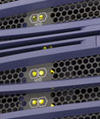
© Kateryna Pruchkovska, 123RF.com
The RADOS object store and Ceph filesystem: Part 2
Magical Storage
Two issues ago, ADMIN magazine introduced RADOS and Ceph [1] and explained what these tools are all about. In this second article, I will take a closer look and explain the basic concepts that play a role in their development. How does the cluster take care of internal redundancy of the stored objects, for example, and what possibilities exist besides Ceph for accessing the data in the object store?
The first part of this workshop demonstrated how an additional node can be added to an existing cluster using
ceph osd crush add 4 osd.4 1.0 pool=default host=daisy
assuming that daisy is the hostname of the new server. This command integrates the host daisy in the cluster and gives it the same weight (1,0) as all the other nodes. Removing a node from the cluster configuration is as easy as adding one. The command for that is:
ceph osd crush remove osd.4
The pool=default parameter for adding the node already refers to an important feature: pools.
Working with Pools
RADOS offers the option of dividing the storage of the entire object store into individual fragments called pools. One pool, however, does not correspond to a contiguous storage area, as with a partition; rather, it is a logical layer consisting of binary data tagged as belonging to the corresponding pool. Pools allow configurations in which individual users can only access specific pools, for example. The pools metadata, data, and rbd are available in the default configuration. A list of existing pools can be called up with rados lspools (Figure 1).
Buy this article as PDF
(incl. VAT)
Buy ADMIN Magazine
Subscribe to our ADMIN Newsletters
Subscribe to our Linux Newsletters
Find Linux and Open Source Jobs
Most Popular
Support Our Work
ADMIN content is made possible with support from readers like you. Please consider contributing when you've found an article to be beneficial.







